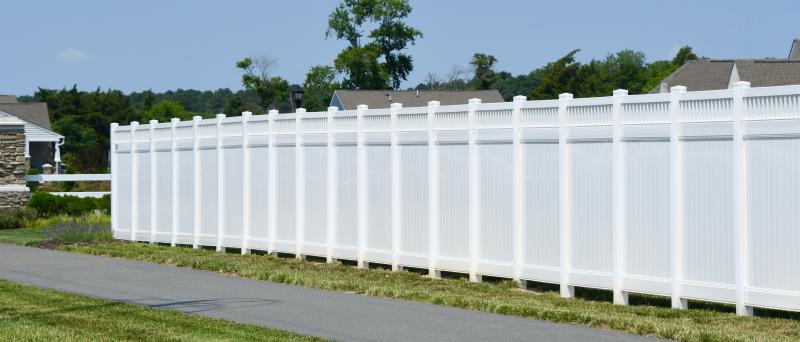Perimeter buffers in Sussex council’s hands
The talking is done. Now it’s time for Sussex County Council to vote on an amended perimeter buffer ordinance.
Following a June 11 public hearing, council deferred a vote to a future meeting. Council is expected to vote on the amended ordinance during its Tuesday, June 25 meeting.
The ordinance addresses perimeter buffer standards in residential subdivisions, buffers in woodlands and areas without woodlands, a landscape plan, maintenance, timing, bonding and guarantees, mitigation, and violations and penalties.
The key provisions in the ordinance include a 30-foot buffer and a new 20-foot protection area to protect perimeter buffers; a five-year look back to mitigate clear-cut perimeter buffer areas; perimeter buffers in place before building permits are issued; and a provision that perimeter buffer and protection areas be delineated and protected before the notice to proceed is issued for site work to begin.
Under the new ordinance, perimeter buffers would be considered no-disturbance areas, and would be delineated by a silt fence and signage during construction.
Disturbance of the buffer area would trigger penalties and mitigation.
Input from Sussex P&Z
Vince Robertson, assistant county attorney, said the newest edition of the ordinance includes some recommendations from the Sussex County Planning & Zoning Commission.
Those include a better definition of forest assessment, which is required as part of an application.
Also, buffer protection areas are off limits to grubbing, but stump grinding would be allowed. Grubbing is clearing, which includes removal of trees, shrubs, stumps and rubbish from a site.
Buffer time limits
Robertson said the time limit for planting a perimeter buffer is still up for debate. “What is the maximum time that we can live with?” he asked council. “Six or 12 months?”
He said they are seeking input from the engineering department to arrive at a number.
He also wanted to make it clear that the ordinance includes stipulations regarding the health of a buffer. He said two years after substantial completion, the owner of record (either a developer or homeowners association) must keep plantings alive, with a guarantee covering the full cost of replacement for any trees, shrubs or existing woodlands.
“We can hold up their bonding if this is not met,” he said.
50 feet, not 30
During testimony, Sussex Preservation Coalition member Steve Sinclair said the organization is advocating for a 50-foot wooded buffer instead of the 30-foot buffer included in the ordinance. He said council should look at the benefits of a buffer beyond screening and privacy.
He said the group supports the proposed 30-foot buffer in areas without woods where a new buffer will have to be planted.
Sinclair said research shows that in order to provide adequate screening to minimize noise, buffers should be from 65 to 100 feet, and the width should be the average height of the trees in the buffer. He said the state has recommended 100 feet.
He said the group recommends that no activity be permitted in the 20-foot buffer protection area.
SPC recommends that trees planted in buffers should be 60% deciduous and 40% evergreen, with trees 2 inches in diameter and at least 6 feet tall. In addition, shrubs should be added to requirements, with 15 trees and a minimum of five shrubs planted per 100 linear feet.
As a penalty for clear-cutting trees, he said, the replanted area should be twice the size of the cleared area, with 25 trees and 10 shrubs every 50 linear feet, with 200 trees per acre.
He said the group also questions an option in the ordinance that would allow developers to plant trees off site. “Why do this somewhere else?” he asked. “Eliminate off-site mitigation.”
In addition, he said, a conservation plan should be a requirement as well as a forest assessment report.
SPC member Jill Hicks said it’s important to ensure that buffers are present around the entire perimeter of a property.
In addition, she said, fences and berms as buffers should never be used in place of vegetated buffers.
She said with the wider buffer proposed by SPC, developers should have no trouble using the buffer as open space. She said of 16 applications researched by the coalition, developers provided 41% to 63% open space.
Joe Conaway, chair of Sussex Economic Development Action Committee, said the organization supports the ordinance, but council should realize the value of lost lots and costs. He said additional costs could be $100,000 to $109,000.
Timing is an issue
Jon Horner, a land-use attorney who was representing the Home Builders Association, said developers do not want to cut down trees in buffers. But utility companies sometimes require utility placement in buffer areas and trees have to be cut down. “Developers shouldn’t be punished for it,” he said.
He said the proposed 12-month requirement for buffers to be in place has practical concerns regarding access to some properties with roads not in place.
“It’s too early, before irrigation and proper grading,” he said, adding that trees planted too early will die.
“It needs to be done while houses are there,” he added.
He said developers constructing cluster subdivisions with smaller lots can’t absorb the lost space. He said, as proposed, about 8 acres of land would be off limits to development in a typical subdivision.
He said the association would have preferred a working group to get input from all stakeholders.

























































